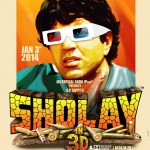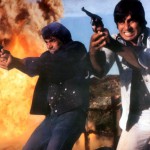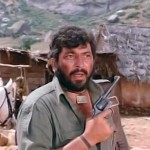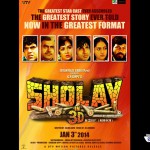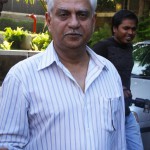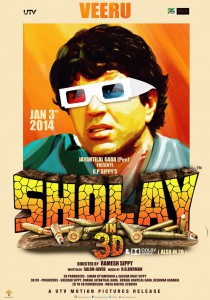 A pair of honest criminals stand up to a cruel bandit that terrorizes a remote village in this great tribute to the western genre, it is the most famous, most cited and according to many the best Bollywood film of all time. The restored 3D version with added digital effects was created 39 years after its premiere, at the instigation of the grandchildren of the original producer.
A pair of honest criminals stand up to a cruel bandit that terrorizes a remote village in this great tribute to the western genre, it is the most famous, most cited and according to many the best Bollywood film of all time. The restored 3D version with added digital effects was created 39 years after its premiere, at the instigation of the grandchildren of the original producer.
Trailer of Sholay with English subtitles.
1975 – 188 min – western
Directed by: Ramesh Sippy
Hrají: Dharmendra, Sanjeev Kumar, Hema Malini, Amitabh Bachchan
Language:Hindi
Subtitles: English, Czech
Format: DCP
In 1961, famous Japanese filmmaker Akira Kurosawa made the samurai drama Yojimbo, partly inspired by classic American Westerns. Three years later, Italian director Sergio Leone transplanted the story to the Wild West in the unacknowledged remake For a Few Dollars (Per un Pugno di Dollari). He thus laid the foundation stone of the new and globally influential Western genre – the spaghetti Western. The intricate paths of mutual inspiration between different national cinemas culminated in 1975 in India, when director Ramesh Sippy decided to transform motifs taken from American and Italian Western classics to make a contemporary paraphrase set in the Indian countryside. In doing so he created what is probably the greatest cult Bollywood film of all time.
Sippy, who is still around these days but hasn’t directed a film in a long time, was in his work an excellent craftsman with a good knowledge of Western cinema and with a flair for transforming its trends for the Indian cultural environment. In addition, he started working on Sholay at a time when Indian filmmakers were beginning to get better opportunities for financing, so he could work with a relatively high budget, which he took advantage of. Along with his talent for the camera he managed to create ingeniously staged and dynamically edited gunfights.
Several other prominent creators were also involved in the making of Sholay: Dharmendra and Amitabh Bachchan, India’s two biggest male idols, were cast side by side in the main male roles. The author of the songs was one of the most popular composers of the 70’s R.D. Burman. The cameraman Dwarka Divecha had already proved his quality with the hits Sasural (1961) and Professor (1962). A special mention should go to award-winning screenwriting duo consisting of Salim Khan and Javed Akhtar, whose ability to write catchy dialogues contributed to the fact that a large number of phrases from the film became part of conversations in India.
This is ultimately one of several factors which contribute to the extraordinary position of Sholay in the Indian popular culture. Perhaps the most telling is the huge number of other movies which refer to Sippy’s film even today. Furthermore, a direct parody was made in 1991, Ramgarh Ke Sholay, and in 2007 the notable director Ram Gopal Varma made his modernized remake Aag, which eventually became the most famous Bollywood flop. The Telugu action flick Gabbar Singh (2013), named after the iconic main villain from Sholay (unforgettable performance by Amjad Khan) on the other hand became a commercial hit.
At the time when it was shot, Sholay had extraordinary technical parameters. It was the first Indian film to be screened in 70 mm with a 6-track stereo sound. Although this distributed version resulted from the blow-up of a classic 35 mm, as shooting on 70mm cameras would be prohibitively expensive at the time. Talks about a conversion into 3D started at the instigation of the grandchildren of the original producer as early as 2010, however we had to wait until January 2014 for the renewed premiere. Within this project, which swallowed over 4 million USD, digital effects were added to the film in order to enhance the result.
Author: Miroslav Libicher

About the director
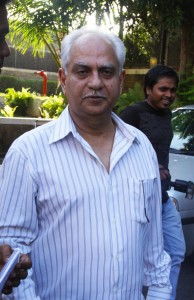 Ramesh Sippy was born in Karachi on January 23rd 1947 and his first film job came at age nine, when he played Achala Sachdev’s son in the 1953 film Shahenshah. He made his way up in the industry working in both the production and direction department, and after 7 years as an assistant, he directed his first film in 1971, Andaz. His second film Seeta Aur Geeta (1972) was highly successful, but 1975 was the year that changed everything, with Sholay, which went on to become the biggest blockbuster in Bollywood film history and won major acclaim. He went on directing and producing over 20 films, and in 2005 he received the Filmfare Best Film of 50 Years award for his legendary film, Sholay.
Ramesh Sippy was born in Karachi on January 23rd 1947 and his first film job came at age nine, when he played Achala Sachdev’s son in the 1953 film Shahenshah. He made his way up in the industry working in both the production and direction department, and after 7 years as an assistant, he directed his first film in 1971, Andaz. His second film Seeta Aur Geeta (1972) was highly successful, but 1975 was the year that changed everything, with Sholay, which went on to become the biggest blockbuster in Bollywood film history and won major acclaim. He went on directing and producing over 20 films, and in 2005 he received the Filmfare Best Film of 50 Years award for his legendary film, Sholay.
